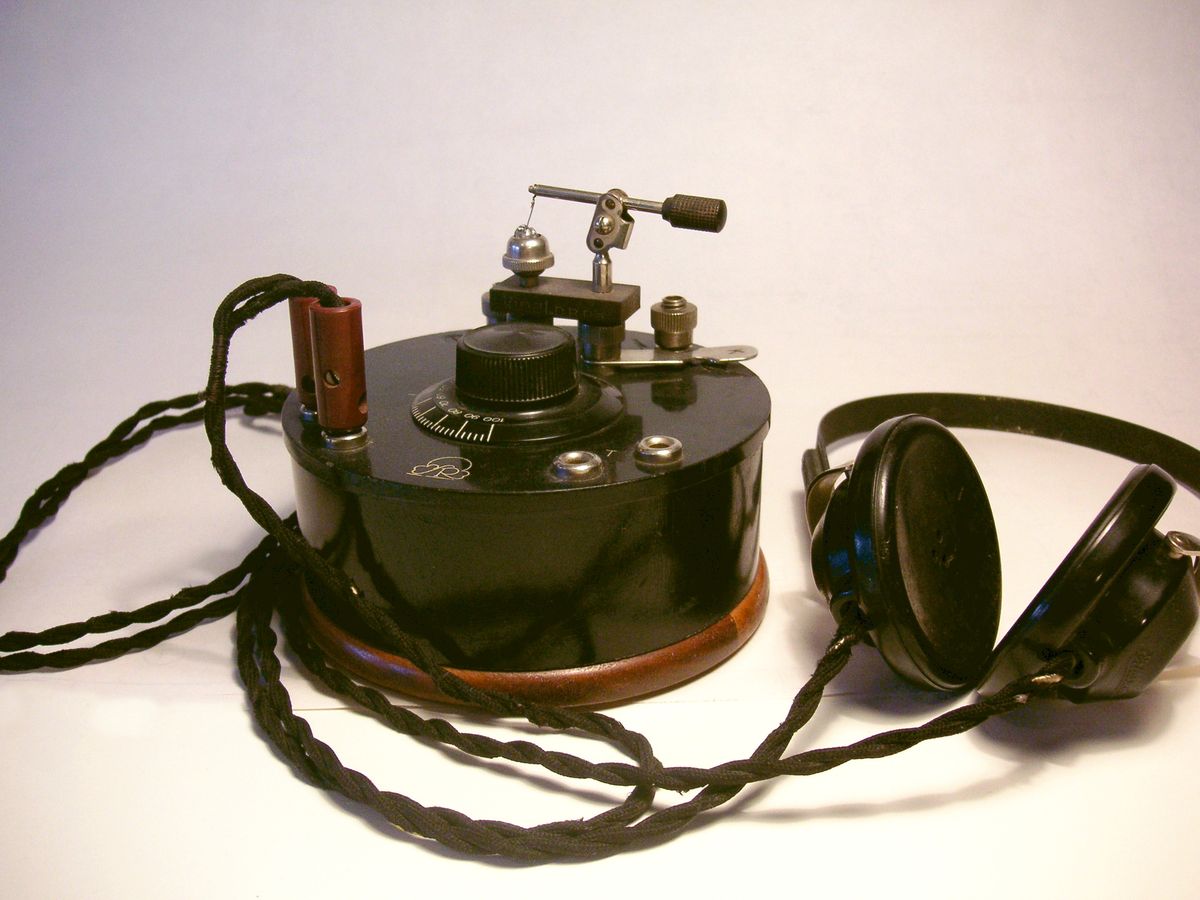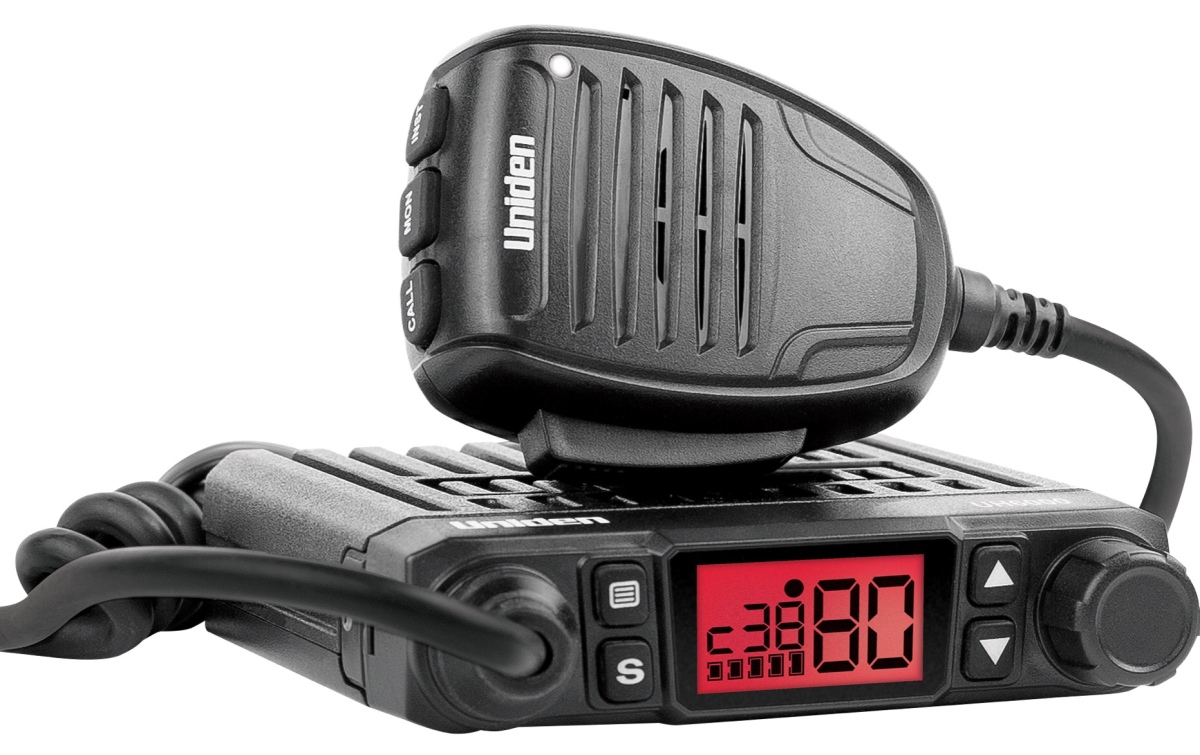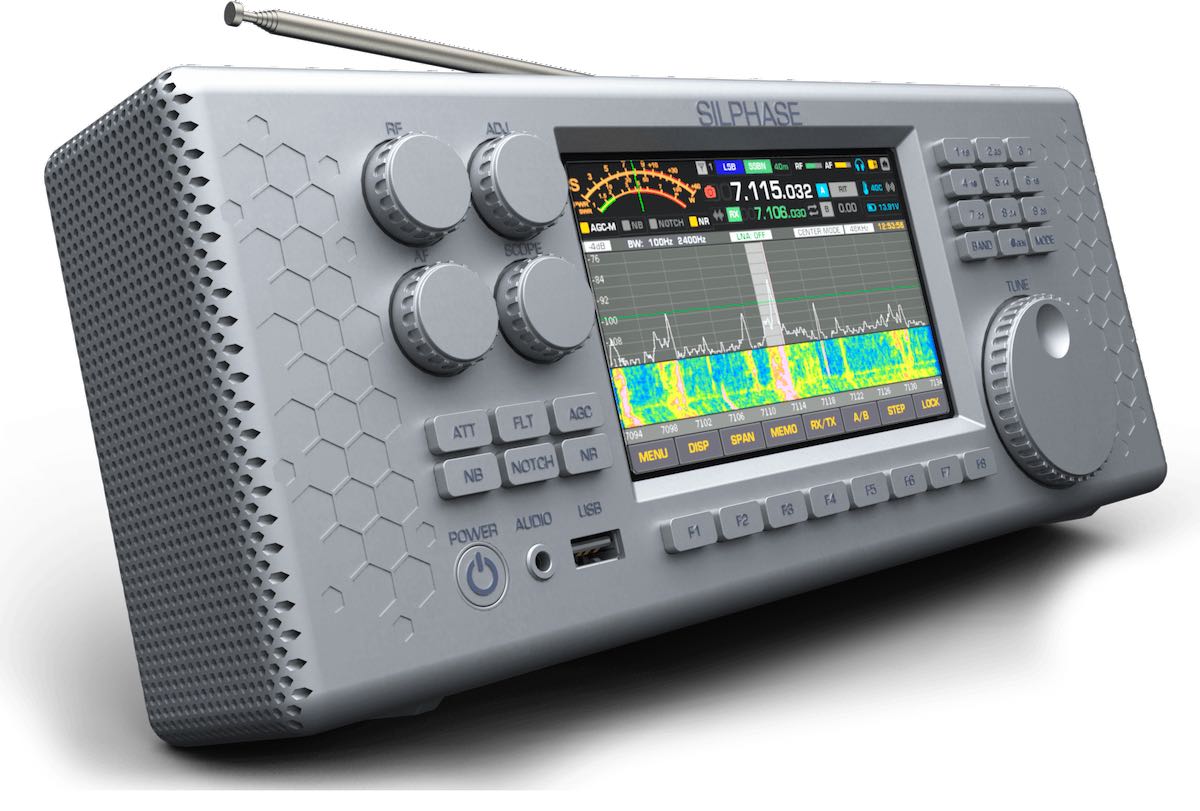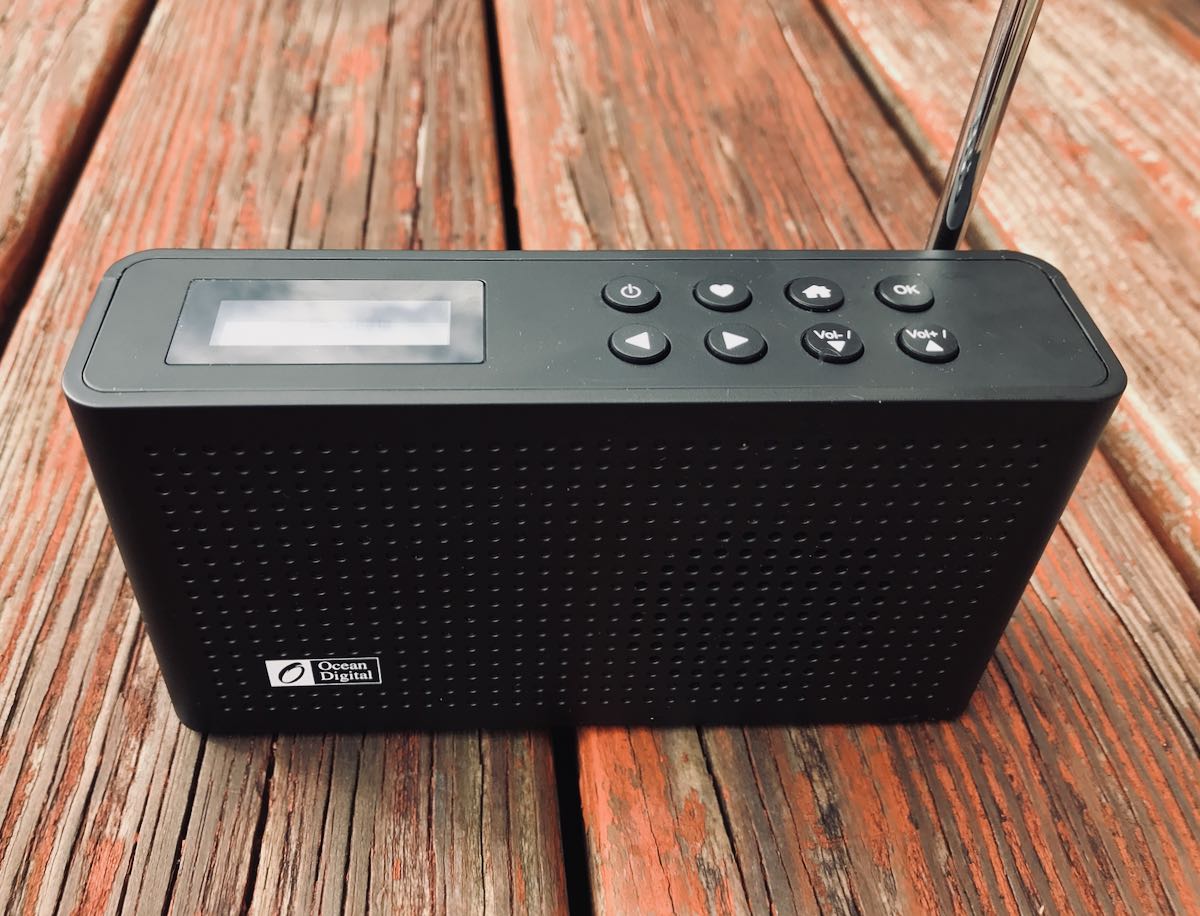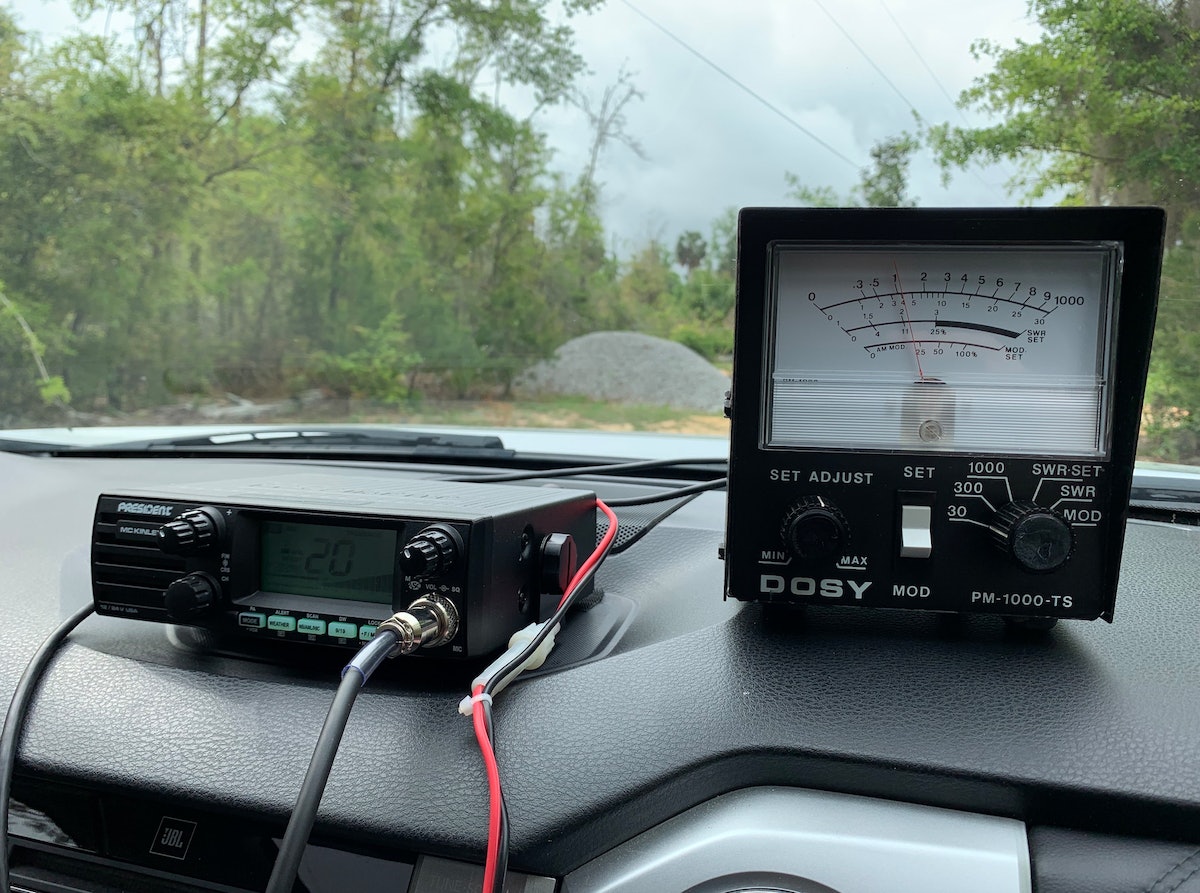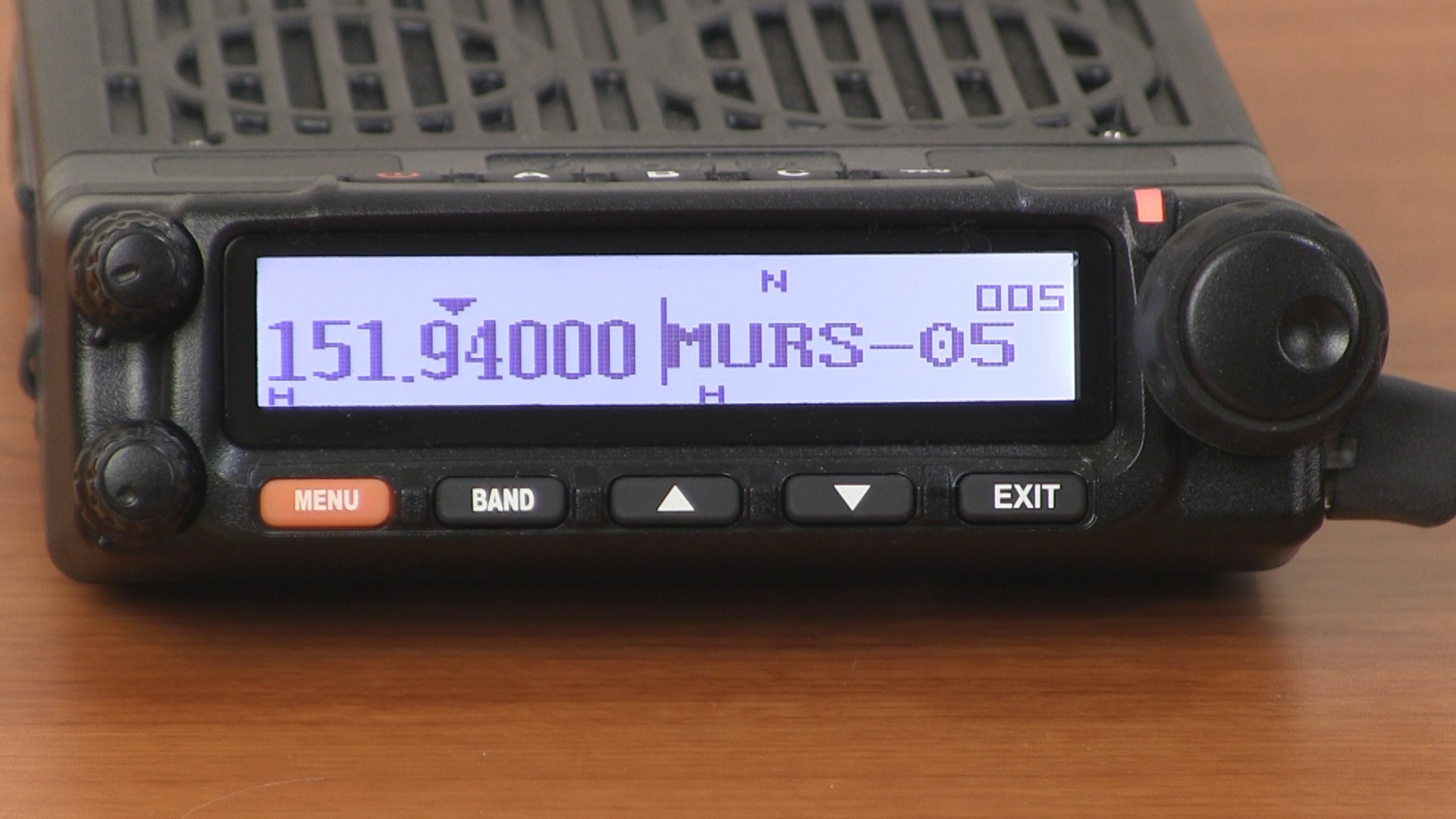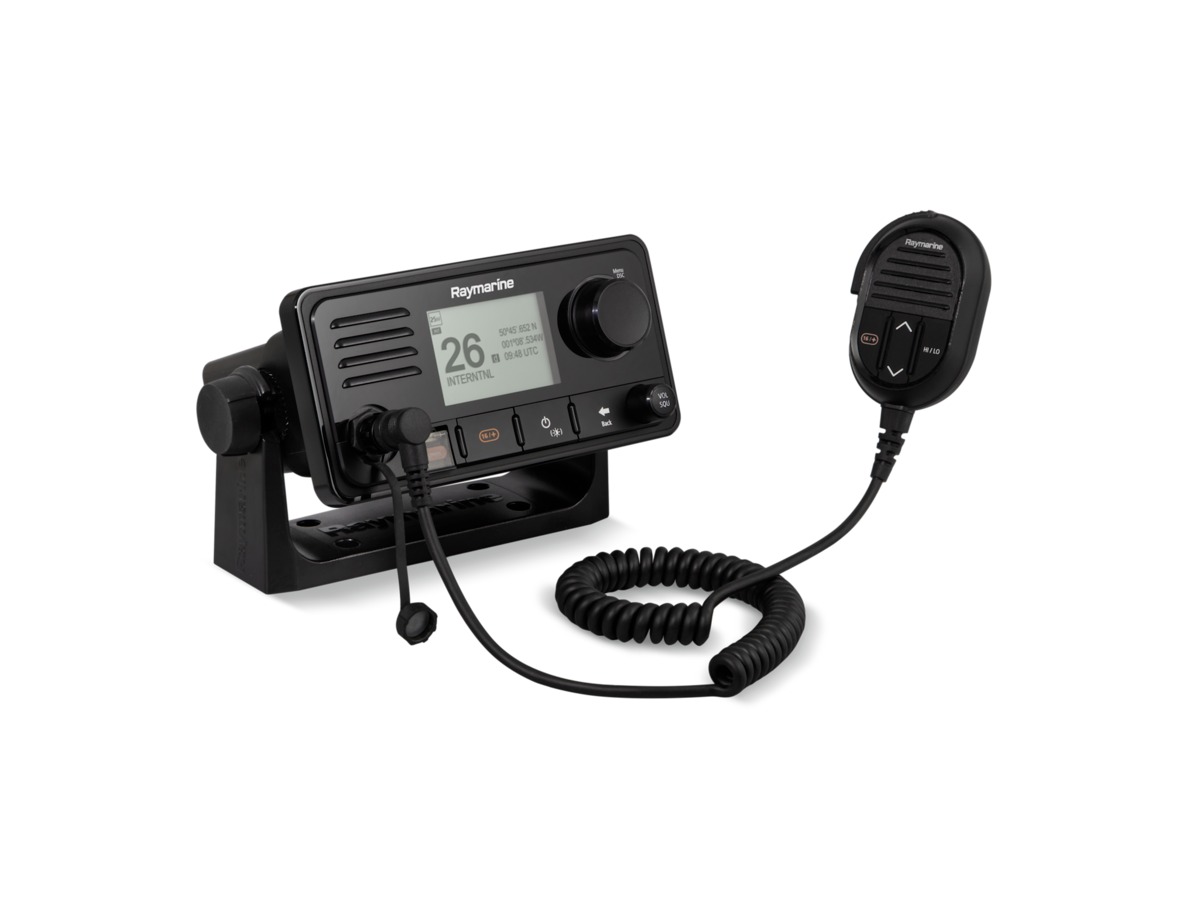Home>Devices & Equipment>Radio>What Is Radio Used For


Radio
What Is Radio Used For
Modified: January 22, 2024
Discover the many uses of radio, from entertainment and communication to emergency broadcasting. Explore how radio technology has shaped our world.
(Many of the links in this article redirect to a specific reviewed product. Your purchase of these products through affiliate links helps to generate commission for AudioLover.com, at no extra cost. Learn more)
Table of Contents
Introduction
Radio, one of the oldest forms of wireless communication, has played a significant role in shaping society and revolutionizing the way people connect and communicate. It uses radio waves to transmit and receive information, allowing for long-distance communication without the need for physical wires or cables. Over the years, radio has evolved from a simple means of communication to a versatile tool with various applications in different sectors.
The invention of radio by Guglielmo Marconi in the late 19th century marked the beginning of a new era of wireless communication. It quickly gained popularity, becoming a primary mode of communication for individuals and businesses alike. Today, radio is used for a wide range of purposes, from communication and entertainment to scientific research and military operations.
In this article, we will explore the different uses of radio and how it has transformed various aspects of our lives. From its fundamental role in enabling communication to its vital contributions in broadcasting, navigation, emergency services, remote sensing, scientific research, military applications, and entertainment, radio has become an indispensable tool in the modern world.
Communication
One of the primary uses of radio is for communication. Radio waves can travel long distances, making it an effective tool for transmitting information between two points without the need for physical connections. This makes radio an ideal choice for long-range communication, especially in remote areas where traditional infrastructure may be lacking.
Radio communication is used in a variety of settings, from personal communication devices like walkie-talkies and ham radios to professional and commercial applications. It is commonly used by emergency services, such as police, fire departments, and paramedics, to stay connected and coordinate their operations. Radio communication also plays a crucial role in maritime and aviation industries, facilitating communication between ships, airplanes, and control towers.
Furthermore, radio communication has been instrumental in enabling communication during disasters and emergencies. When other forms of communication infrastructure may be compromised or unavailable, radio can provide a lifeline for people to reach out for help or stay informed about safety instructions and updates.
In addition to its utility in emergency situations, radio communication is also widely used for personal and recreational purposes. Citizens band (CB) radios, for example, enable individuals to communicate with fellow radio users in close proximity. This has become popular among truckers, off-road enthusiasts, and hobbyists looking for a means of communication during their activities.
Moreover, radio communication plays a significant role in the operation of various industries. Companies in the transportation, logistics, and manufacturing sectors rely on radio communication to coordinate and streamline their operations. It allows employees on the ground and in vehicles to connect and exchange information efficiently, enhancing productivity and ensuring smooth workflow.
Overall, radio communication is a versatile and reliable means of communication that has found applications in different spheres of life. Its ability to transmit information over long distances without the need for physical infrastructure makes it an invaluable tool in ensuring connectivity and effective communication in various settings.
Broadcasting
Radio broadcasting is a cornerstone of the entertainment industry and a powerful medium for disseminating information to the masses. It allows for the transmission of audio content, including music, news, talk shows, sports coverage, and more, to a wide audience.
The invention of radio broadcasting revolutionized the way people consumed media. It brought live performances, news updates, and cultural programming directly into people’s homes, increasing access to information and entertainment on a global scale.
Radio stations operate on different frequencies, typically in the commercial FM and AM bands. They broadcast content through radio waves, which are captured by antennas on radios or other devices, allowing listeners to tune in and listen to their preferred stations.
Radio broadcasting serves as a platform for artists and musicians to showcase their talent and reach a broad audience. Music genres of all types find their home on radio stations, catering to diverse tastes and preferences. It has an influential role in promoting new releases, emerging artists, and shaping popular culture.
In addition to music, radio broadcasting is a vital source of news and information. News radio stations provide up-to-date reports, weather forecasts, and traffic updates, helping listeners stay informed about current events. Talk radio programs offer a platform for discussions on various topics, fostering dialogue and providing different perspectives on issues that matter to society.
Radio broadcasting has also expanded beyond traditional stations. With the rise of the internet, online radio and podcasting platforms have gained popularity. These platforms allow individuals and organizations to create their own radio shows or podcasts and reach a global audience. It has democratized the broadcasting landscape, giving a voice to diverse voices and perspectives.
Overall, radio broadcasting remains a prominent and influential medium, providing entertainment, news, and information to millions of people worldwide. Its ability to reach a wide audience and provide a sense of connection and community makes it a significant force in the media industry.
Navigation
Radio plays a crucial role in navigation, aiding in the precise determination of location, particularly in areas where other forms of navigation may not be feasible or accurate. This is achieved through a system called radio navigation, which utilizes radio signals to determine position, velocity, and other navigational information.
One of the most well-known radio navigation systems is the Global Positioning System (GPS). GPS uses a network of satellites orbiting the Earth to provide accurate positioning data. GPS receivers on the ground pick up signals from multiple satellites, allowing them to triangulate the user’s position with remarkable precision.
The use of radio waves for navigation is not limited to GPS. Other radio-based navigation systems, such as LORAN (Long Range Navigation), utilize ground-based radio beacons to determine position. These beacons emit specific signals which can be received and used to calculate distance and direction, aiding in navigation for ships and aircraft.
Radio navigation is particularly important in the aviation industry. Aircraft rely on radio beacons and GPS systems to navigate during flights. Pilots can input specific waypoints into their onboard navigation systems, allowing them to follow pre-determined routes accurately and reach their destinations with enhanced efficiency and safety.
In the maritime domain, radio navigation plays a critical role in ensuring safe and efficient navigation of ships. Maritime beacons transmit signals that help ships determine their position, especially in areas where visibility may be limited or where precise navigation is required.
Furthermore, radio waves are utilized for radio direction finding (RDF) to locate the source of radio signals. This is particularly useful in search and rescue operations or when trying to locate unauthorized radio transmissions. RDF uses directional antennas and signal strength measurements to determine the direction of a radio signal, aiding in the location of its source.
Overall, radio navigation systems are essential tools for accurate positioning and reliable navigation, both in the air and on the water. They provide crucial information that enables safe and efficient travel, contributing to the smooth operation of transportation systems around the world.
Emergency Services
Radio plays a crucial role in emergency services, providing reliable and efficient communication channels for first responders, law enforcement agencies, and other emergency personnel. In times of crisis and disaster, when other forms of communication can be compromised, radio offers a lifeline for coordination, information sharing, and rapid response.
Emergency services organizations, such as police departments, fire departments, and paramedic services, rely heavily on radio communication to enable smooth and effective operations. Radio systems allow personnel to communicate with each other and with command centers, ensuring seamless coordination during emergency situations.
First responders use radio communication to relay critical information, request additional resources, and receive instructions from dispatchers and supervisors. This real-time communication is vital for situational awareness and decision-making during high-pressure and dynamic incidents.
Radio communication also plays a crucial role in public safety and disaster response. Emergency management agencies can use radio systems to issue alerts, warnings, and evacuation orders to the public. This helps ensure that information reaches affected individuals promptly, facilitating timely action and potentially saving lives.
In addition to voice communication, radio systems may also facilitate the transfer of data, such as location information, photographs, and other relevant data. This enhances situational awareness and enables better coordination between different response agencies in the field.
Radio communication is also utilized in search and rescue operations. From wilderness rescues to locating missing persons, radio systems provide a reliable means of communication between search teams, ensuring efficient organization and collaboration.
Furthermore, radio plays a vital role in interoperability between different emergency services agencies. During large-scale incidents or multi-jurisdictional operations, different agencies may need to communicate seamlessly. Radio systems with interoperability features allow for effective communication and coordination between these entities, improving incident response and overall public safety.
Overall, radio communication is indispensable in emergency services, providing reliable and efficient means of communication for first responders and emergency personnel. Its versatility, wide coverage, and ability to maintain communication in challenging environments make it a critical tool for preserving public safety and protecting lives during emergencies and crisis situations.
Remote Sensing
Radio waves are not only used for communication but also for remote sensing, a technique that allows for the measurement and analysis of various characteristics of the Earth’s surface and atmosphere. Remote sensing using radio waves helps researchers gather valuable information about the environment, climate patterns, and other geophysical phenomena.
One significant application of remote sensing is in weather forecasting. Radio waves are used to measure atmospheric conditions, such as moisture content, temperature, and wind speed. This data is collected from weather balloons, satellites, and ground-based sensors, providing meteorologists with vital information to predict weather patterns accurately and issue warnings when necessary.
Similarly, remote sensing through radio waves is used in the study of the Earth’s surface. Ground-penetrating radar is a technique that sends radio waves into the ground and measures their reflections to map subsurface structures. It is used in geology and archaeology to discover hidden features, such as underground structures, buried artifacts, and geological formations.
Radio waves are also utilized in remote sensing for environmental monitoring and resource management. Satellite-based sensors can detect changes in vegetation coverage, assess water quality in lakes and rivers, and monitor the health of ecosystems. This information is essential for managing natural resources, detecting changes in the environment, and implementing conservation measures.
Radio-based remote sensing is also employed in the domain of agriculture. Farmers can use satellite data and ground-based sensors to monitor crop health, soil moisture, and other parameters. This enables precise irrigation and fertilization, optimizing crop yield and reducing resource waste.
Furthermore, remote sensing using radio waves has applications in the field of telecommunications. It allows for the monitoring and analysis of radio frequency (RF) signals, ensuring the efficient use of the RF spectrum and identifying potential interference sources.
Overall, remote sensing through radio waves provides valuable insights and data about the Earth’s atmosphere, surface, and natural resources. It aids in weather forecasting, environmental monitoring, resource management, and many other scientific and practical applications, contributing to our understanding of the planet and enabling informed decision-making for a range of industries and sectors.
Scientific Research
Radio waves have made significant contributions to scientific research in various fields, opening up new avenues for exploration and discovery. Scientists harness radio technology to study the universe, the Earth’s atmosphere, and even microscopic particles, providing crucial insights into the workings of the world around us.
One of the most notable scientific applications of radio waves is in astronomy. Radio telescopes capture and analyze radio waves emitted by celestial objects and phenomena, allowing astronomers to study distant galaxies, quasars, pulsars, and other cosmic entities. This has led to groundbreaking discoveries in the field of astrophysics, expanding our understanding of the universe and its origins.
Radio waves are also used in atmospheric research. Radio occultation is a technique where radio signals from satellites are refracted as they pass through the Earth’s atmosphere. By analyzing these signals, scientists can gather data on atmospheric parameters like temperature, humidity, and pressure. This information helps improve weather models and enhances our understanding of climate dynamics.
In particle physics, radio waves play a role in experiments that study subatomic particles. For example, scientists use radiofrequency cavities in particle accelerators to accelerate and manipulate particles, enabling them to study their properties and behavior. Radio waves are also used in particle detectors to measure the energy and trajectories of particles produced in high-energy collisions.
Moreover, radio waves are employed in geophysical research. The use of ground-penetrating radar allows scientists to study subsurface structures and map geological features. This aids in understanding geological processes, studying the Earth’s history, and locating valuable resources like minerals and groundwater.
In addition to these specific applications, radio waves are used as a tool in various other scientific disciplines. Researchers in biochemistry, material science, and other fields use nuclear magnetic resonance (NMR) spectroscopy, a technique that relies on radiofrequency pulses, to study the properties and structures of molecules.
Overall, radio waves have revolutionized scientific research, allowing scientists to explore and study the universe, the Earth, and the building blocks of matter. Their widespread applications in astronomy, atmospheric research, particle physics, and other scientific fields have opened up new frontiers of knowledge, pushing the boundaries of human understanding.
Military Applications
Radio technology has been extensively utilized for military applications, providing a reliable and secure means of communication, surveillance, and coordination on the battlefield. Its versatility, long-range capabilities, and resistance to interference make it an integral part of modern military operations.
One of the primary military uses of radio is in battlefield communication. Radios enable soldiers and commanders to maintain real-time communication, sharing vital information, coordinating movements, and issuing orders. Interoperable radio systems allow different units and branches of the military to communicate seamlessly, facilitating joint operations and enhancing overall situational awareness.
Radio technology also plays a crucial role in electronic warfare, where it is used for signal intelligence (SIGINT) and electronic countermeasures (ECM). SIGINT involves intercepting and analyzing enemy radio signals to gather intelligence, including decoding encrypted communications and identifying enemy positions and movements. ECM, on the other hand, involves disrupting or jamming enemy communication systems to hinder their ability to coordinate and communicate effectively.
Furthermore, radar systems, which rely on radio waves, are essential for military surveillance and detection. Radar can detect and track aircraft, ships, and ground vehicles, providing early warning of potential threats. It aids in air defense systems, coastal surveillance, and target acquisition, allowing for effective response and protection.
Radio technology is also used in remote-controlled systems, such as unmanned aerial vehicles (UAVs) or drones. Radio signals enable pilots and operators to control and navigate these vehicles, gathering reconnaissance data and performing surveillance missions without risking human lives.
In addition to communication and surveillance, radio waves are utilized for navigation in military operations. GPS, with its accurate positioning capabilities, is integral to guiding military aircraft, vehicles, and troops. It allows for precise targeting, navigation in unfamiliar territories, and effective coordination between units.
Radio technology is also crucial in military satellite communications. Military satellites facilitate secure and reliable communication over vast distances, even in remote or hostile environments. These satellites enable commanders to stay connected and share critical information in real-time, ensuring efficient decision-making and coordination.
Overall, radio technology is deeply ingrained in military operations, providing essential capabilities in communication, surveillance, target acquisition, and navigation. Its effectiveness in these areas enhances the military’s ability to execute missions, protect national security, and optimize operational efficiency in various defense settings.
Entertainment
Radio has long been a popular medium for entertainment, delivering music, news, talk shows, sports coverage, and other forms of programming to a wide audience. It has played a significant role in shaping popular culture and providing a source of enjoyment and information for people around the world.
One of the key elements of radio entertainment is music. Radio stations, both terrestrial and online, offer a wide range of music genres to cater to diverse tastes. From pop and rock to classical and jazz, radio provides a platform for artists and musicians to showcase their work and reach a broad audience.
Radio DJs or presenters guide listeners through their favorite songs, sharing insights, stories, and information about the music they play. They add a personal touch to the listening experience, connecting with the audience and creating a sense of community and shared enjoyment.
In addition to music, radio offers a variety of other entertainment programming. Talk shows provide platforms for discussions on various topics, such as politics, current events, and lifestyle. These shows allow listeners to engage, learn, and express their opinions on social issues or matters of personal interest. Sports radio provides live coverage, commentary, and analysis of sporting events, keeping fans up to date and engaged with their favorite teams and athletes.
Radio dramas and storytelling programs have been a staple of radio entertainment for decades. These scripted performances engage listeners’ imaginations, transporting them into captivating narratives, whether it’s through mystery, comedy, science fiction, or historical reenactments. Today, many podcasts continue this tradition, presenting serialized audio dramas to a modern audience.
Furthermore, radio is a platform for news and information, offering listeners access to current events, weather updates, and local news. Radio news broadcasts keep people informed about important developments, and radio talk shows provide a space for experts to discuss and analyze various topics.
With the advent of internet radio and streaming services, the entertainment options have expanded even further. Online radio stations and platforms allow people to discover new music, access international stations, and create personalized playlists. This digital era has made radio more accessible and interactive, giving listeners greater control over their listening experience.
Overall, radio continues to be a significant source of entertainment, providing music, talk shows, news updates, sports coverage, and storytelling. Its ability to connect with listeners through sound alone creates a unique and immersive experience, making it a beloved medium for entertainment around the world.
Conclusion
Radio, with its ability to transmit and receive information using radio waves, has truly transformed the way we communicate, entertain, navigate, and conduct various scientific and military operations. From its early days as a means of long-distance communication to its modern applications in broadcasting, navigation, remote sensing, and more, radio has become an integral part of our daily lives.
Communication is at the heart of radio’s impact, enabling individuals, businesses, and emergency services to connect, coordinate, and stay informed. Its role in broadcasting has brought the world of music, news, and entertainment directly into people’s homes, providing a diverse array of programming to suit every taste. Radio navigation has revolutionized the way we travel and explore, enhancing safety and efficiency, while remote sensing has expanded our understanding of the Earth and its resources.
In the realm of science, radio waves have helped us unravel the mysteries of the universe through astronomy and study the Earth’s atmosphere and surface through various remote sensing techniques. Moreover, radio technology has proven indispensable in military operations, ensuring secure communication, surveillance, and navigation capabilities.
As technology continues to evolve, the entertainment landscape has also been shaped by radio, with online streaming and podcasts opening up new possibilities and allowing for greater customization and accessibility.
In conclusion, radio’s versatility, reliability, and reach have made it an invaluable tool across various sectors. It continues to innovate and adapt, remaining a powerful medium for communication, entertainment, scientific research, navigation, and military applications. As we look to the future, radio will undoubtedly continue to play a vital role, connecting people, expanding knowledge, and entertaining audiences around the globe.

